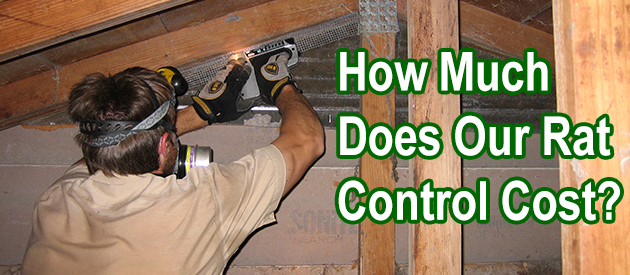Knox County, Knoxville Rat Control Situation:
I own a 2 story w basement corner row house in Knoxville. Last night while asleep on the couch in my first floor living room, noise in my ceiling by the front wall woke me up. Sounded like the scurrying of 1or 2 mice. Joists run the width of my house, from the outer wall to my neighbors house, so that space leads to nowhere. No food, water, or other openings are available. Should I be concerned, should any (?) action be taken?
One story concrete slab house with rats in attic. I have sealed up every hole to the attic I can find. The last thing I did was put the 1/2" wire mesh on all the vent pipes on the roof. The wire mesh on all the stacks, seemed to fix my problem, but about 2 months later they are back. I put up some security cameras in the attic and at bottom of a double wall space for plumbing, and can see the rat coming down and going up at bottom of a 2" pvc vent pipe obscured by a wall between two bathrooms with a tub on one side and shower on the other. The vent pipe is for the tub and shower. From the top of wall in the attic, I was able to cut out around the pipe and see down the wall about halfway down the 2" pvc vent was split (offset) maybe broke during construction where 2 pipes were joined together. Could not see actual chewed off part, but is probably there. I can see that the rat could get in there, but my question is where or how is he going outside besides into the sewer? The top is sealed with the wire mesh. I can fix the split pipe easily by tearing out the shower wall, but do you think that would fix the entry problem? How long can rats stay in attic without going outside for food? Do attic rats tunnel under a concrete slab house for entry?
Knoxville Rat Control Tip of The Week
Why Does Homeowners Insurance Not Usually Pay For Damage Caused By Rats?
Unlike harm caused by other pests (for example termites), home damage caused by rats and mice are commonly not covered under the arrangements of a standard homeowner's insurance policy. This is because it is a preventable misfortune that could have been avoided, using appropriate pest maintenance.
That being the situation, it's ideal to stop the issue from really developing once you recognize any indications of rodent infestations:- A single rat sighting (generally implies there are more)
- Rat droppings
- Hearing scurrying through the dividers
- Chewed through food boxes
- Chewed up wires
- Rodent homes
- Dirty or oily rat tracks on the floor or dividers
Harm to your home or different structures from insects, rodents (for instance, rats, mice, squirrels, and chipmunks) or flying creatures, is normally not covered by a standard homeowner's policy (albeit a window broken by a fledgling might be an exception). Animal invasions and harm from animal waste or secretions are generally excluded from a homeowner's policy. Should an opossum (or some other animal) enter your home, homeowner's insurance policies won't pay for expulsion, cleanup, or fixes to any harm it causes or leaves behind.
Remember that the homeowner's insurance policy does not provide coverage for harm done to your property, brought about by pets or other domestic animals, such as a pig, cow, or chicken. If your dog bites his way through a door, your insurance agency, no doubt, won't cover the cost of replacement.
Not only is a rodent infestation an indisputable hazard to your health - the spread of disease, aggravation of allergy symptoms, etc. - but mice or rats can chew up your electrical wiring and cause house fires. While a home fire may, by chance, be one thing you are covered for as regards to a rodent invasion, you will need to get to the root of the issue before such a dangerous event occurs!


